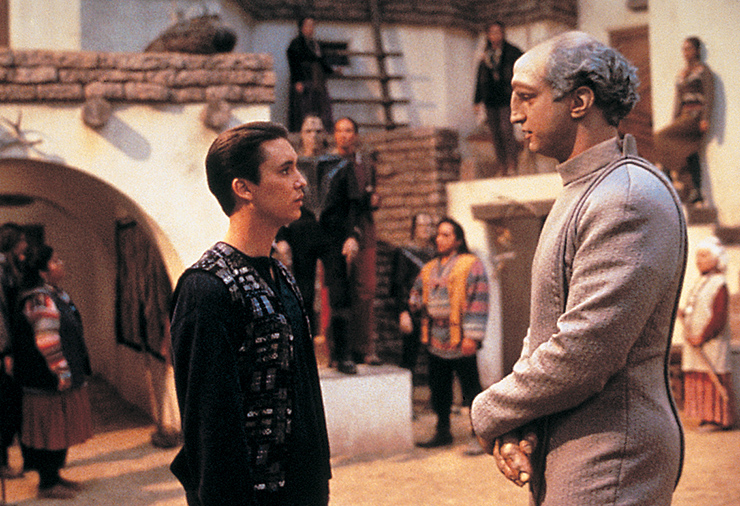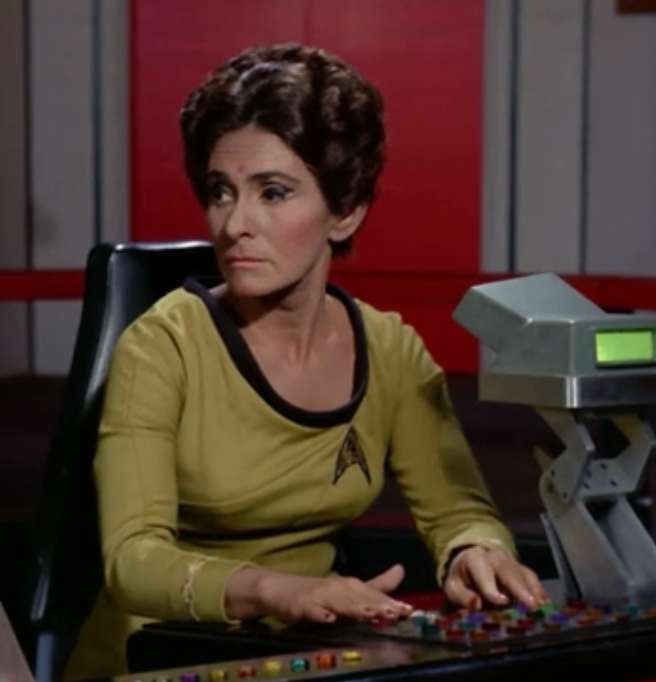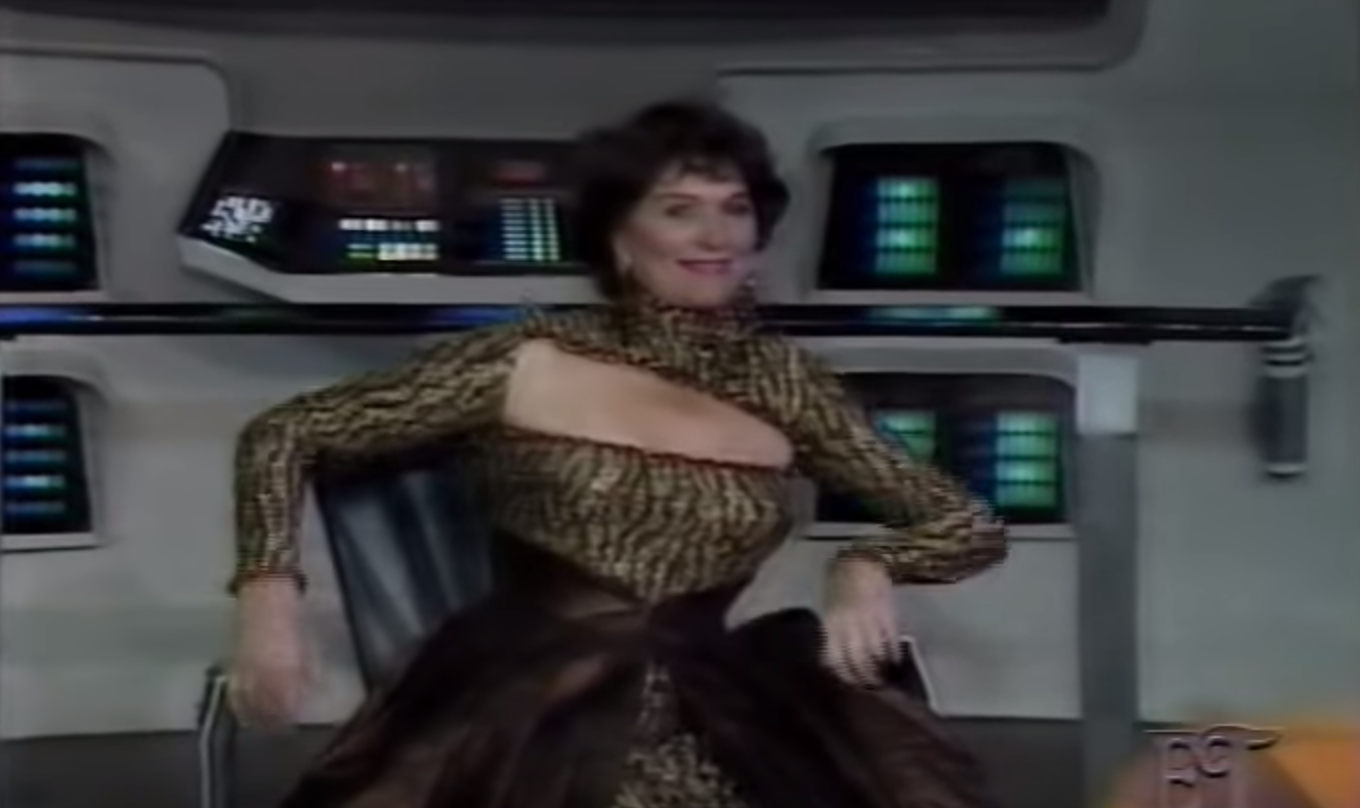Wesley meets Lakanta, who explains that all things are sacred and has him participate in a spirit quest where he speaks with his late father and ostensibly gains clarity. Despite the later revelation that Lakanta is really the Traveler (and that the palest of aliens therefore adopted the form of a brown-skinned man as a kind of shapeshifting blackface), the interaction with Wesley’s ‘father’ is never referred to or examined again…
By adopting the dressings of a real spiritual practice, the writers present a troubling appropriation that makes little sense within the world presented…
[Later], one of the Natives shoots a Cardassian, and an ugly, violent fight is imminent – and Wesley pulls himself out of time in a freeze-frame as the Traveler reveals himself. In addition to being a great visual moment, it also highlights another aspect of the story, the ramifications for which are not touched upon: Wesley has this ability to remove himself from time and space, and so he can leave anytime he wants to; he never renounces *his* Federation membership. The consequences of his actions will never land solidly upon him, and, though he plans to stay on Dorvan V to learn many things from the people there, it is also clear that he will one day leave and travel elsewhere, and the Natives will be left behind.
“Journey’s End: The Problem with Aliens in Brownface” by Cait Coker in Outside In Makes It So: 174 New Perspectives on 174 Star Trek TNG Stories by 174 Writers.











